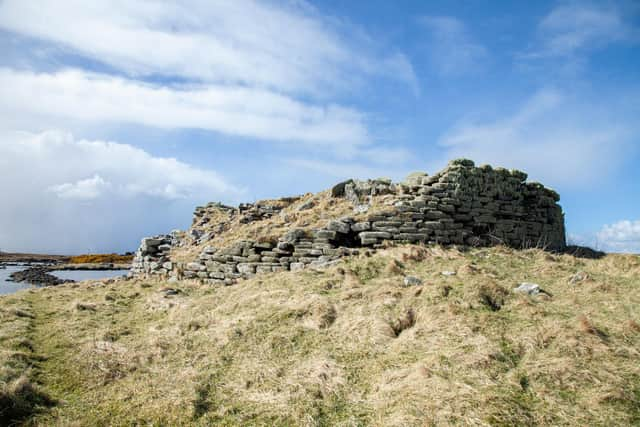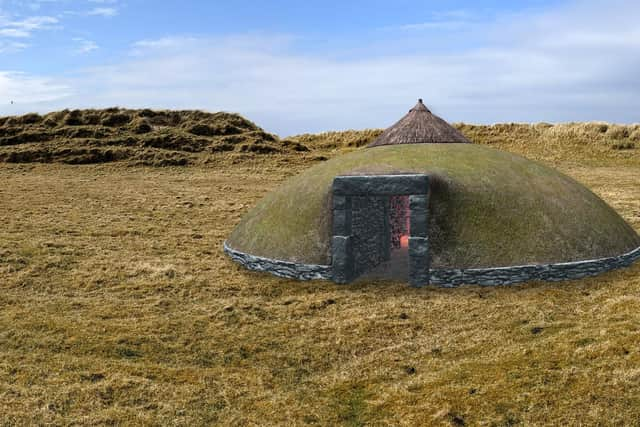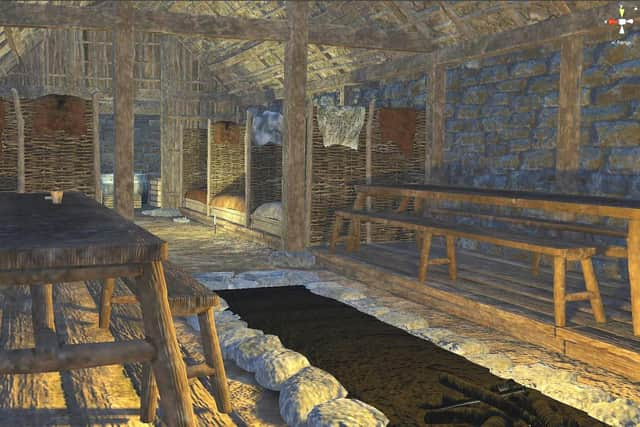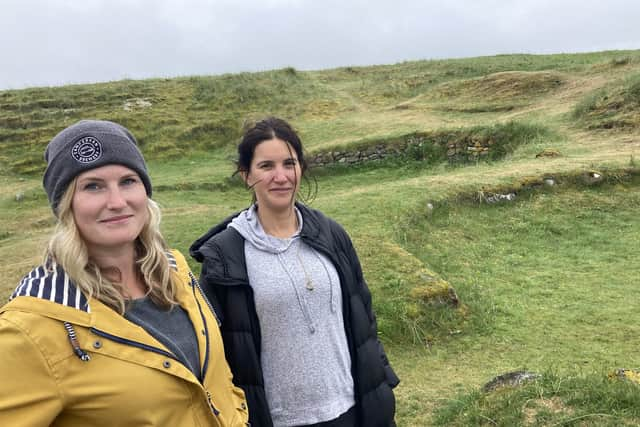From Viking halls to Bronze Age mummies: Step back into deep time as extraordinary archaeology of Uist reconstructed
On the road through North Uist, motorhomes and cars push onwards seemingly unaware of the incredible historic site that sits tucked down in the water that laps all around.
It doesn’t, perhaps, look like much to the untrained eye although the causeway to the man-made island – which appears to be guarded by one almighty lone swan – might hint of a once-inhabited and important place.
Advertisement
Hide AdAdvertisement
Hide AdDun An Sticir is a place loaded with time passed, of Iron Age status building and bloody power struggles lost and won during the medieval Lord of the Isles period. It is central to the story of Uist but it seems to have fallen quiet and unseen from the roadside – until now, that is.


It is one of the sites that features in Uist Unearthed, a major piece of technological innovation, devised on the islands, which is changing the way that history is told here, a place where its archaeological sites are considered as internationally significant as those found on, say, Lewis and Orkney but where they go, by comparison, largely unnoticed.
The Uist Unearthed app, once downloaded on a smartphone, uses a mix of GPS, archaeological data and Augmented Reality to rebuild sites before us, allowing us to experience how they would have appeared in their prime. Stand on the causeway at Dun An Sticir and the broch, probably built by 100AD, appears before our eyes and, through the screen of the smartphone, the monumental towerhouse emerges.
We move around the site, not among the remains as they are found today, but as it was found long ago. We crouch and turn to navigate the building that was re-used around 1400AD by Hugh MacDonald of the MacDonalds of Sleat, a man remembered as a power-hungry criminal whose polite invite to a feast ended up in the murder of three sons of a priest. Later, he was locked in a dungeon and fed salt beef by his own family until he died of dehydration. As the timeline and tales of Dun an Sticir emerge through the app, the space and scale of where you stand tilts and shifts. The swan, meanwhile, looks on.
Uist Unearthed has been designed by archaeologists Dr Emily Gal and Dr Rebecca Rennell, of UHI Archaeology Institute, who are based at the university's campus in South Uist, with AR experts at Peel Interactive. The app has now won three awards.


Dr Gal said: “The archaeological sites we have in Uist are just as important as say Lewis or Orkney. They are internationally significant and they have changed the way we look at prehistory.
“When we look at the visitor surveys for Uist, not many people cite archaeology or heritage as a reason to come . If you contrast that to Orkney, for example, the numbers are very, very high. We want to try and flip that.
“We don’t have that many upstanding remains, a lot of it is hidden in these beautiful landscapes so it is there, but you need to dig a little deeper. Augmented reality is a great tool to reveal these sites and make them visible.”
Advertisement
Hide AdAdvertisement
Hide AdThere are five sites reconstructed on the Uist Unearthed app. A second broch, Dun Torcuill, is on the tour as is the Bronze Age roundhouse site of Cladh Hallan, where the first prehistoric mummies in Britain were discovered. A viking hall at Bornais, one of the largest Norse settlements found in Scotland, emerges from a plain of machair in South Uist.


The technology also helps to understand the landscape and how it has changed – along with the island population - over hundreds, if not thousands, of years.
Walk over the dunes at Cladh Hallan and you will reach the spot where mummified human remains were found in the early 2000s. Some of the skeletons were made up of body parts of several people in a discovery that stunned the archaeological world.
Today, it is a quiet place where the odd dog walker heads over to the beach but around 3,000 years ago, a different story can be told as communities made their homes here.
“Then it would have been bustling, loads of people, loads of children, animals, dogs, probably quite noisy, smelly, smokey,” Dr Gal said.


Dr Rennell added: “As archaeologists we are walking down here and thinking ‘look at the remains of this really busy landscape’ and we can imagine it. But for most people, quite understandably, they think ‘ this is quiet, this is remote, probably nothing really happened here’.
“Actually nestled here in the dunes is not only where you have this busyness but you have some really exceptional things happening.”
After activating the app, the roundhouses spring into view. As you head towards them, a sense of time and place intensifies as the ambient sounds of the sea and settlement filter through. The level of detail is incredible as you start to walk a new space, physically crouching down to get through the door. Inside, the discoveries are immense.
Advertisement
Hide AdAdvertisement
Hide AdOver at Bornais, one of the largest Norse settlements in Scotland, you will encounter a high-status longhouse, constructed around 1050AD which emerges from the open machair. Once transported back 1,000 years through the app, the door of the hall creaks open to reveal a scene of apparent luxury, where fur rugs line the living area and a fire crackles before you. Exit, turn off the app, and you stand there, back on the machair where no one else is seen, just the passage of time swirling and deepening all around.
The Uist Virtual Archaeology Project is supported by the ERDF Natural and Cultural Heritage Fund administered by NatureScot, The National Lottery Heritage Fund, Comhairle nan Eilean Siar, Stòras Uibhist and Highlands and Islands Enterprise.
Comments
Want to join the conversation? Please or to comment on this article.